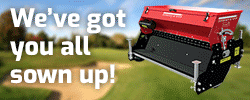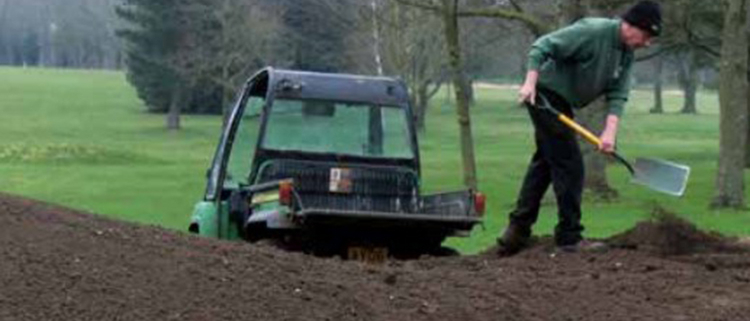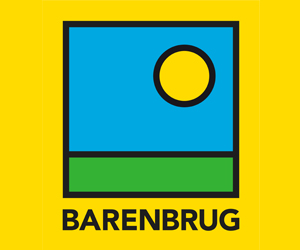Time to do things differently?
Time to do things differently?: With the world’s oldest golf courses being almost exclusively links courses it is no coincidence that very sandy materials have traditionally been used for the construction and refurbishment of coastal and inland golf courses across the world.
Sand provides a firm, level and well drained playing surface. Because it is inert it does not hold onto nutrients or water and this allows greenkeepers to manufacture the environment required through the addition of artificial fertiliser and the introduction of water through irrigation.

Time to do things differently?
Notwithstanding the unprecedented, and unexpected, positive impact of the current pandemic on the global environment, our climate continues to change. For some time, scientists and consultants working in the industry have been looking at how golf course construction and refurbishment could be done differently in the future, using materials that are better suited to work with the vagaries of the climate, have a less detrimental impact on our environment, and reduce annual costs.
The use of soil and soil-based products to construct, refurbish and maintain tees, bunkers and green surrounds is proving increasingly popular with greenkeepers and golf course consultants who have been encouraged by STRI research, feedback from scientists, and industry case studies and testimonials.
A good soil is a mixture of mineral particles – sand, silt and clay – water, nutrients – predominantly nitrogen, phosphorus, potassium and magnesium – organic matter, air and living organisms. ‘Virgin’ or ‘as dug’ natural topsoil as a construction material for shaping course features, tees, bunkers etc. is neither sustainable nor reliable.
Not only are the world’s soil resources being depleted at an alarming rate but virgin soil is also a ‘take it or leave it’ material that may lack the right balance of the constituents listed above, affecting its performance.
British Sugar Topsoil products are sustainable, being derived from the prime arable soils that adhere to the sugar beet brought in to British Sugar factories. The soil is washed from the beet and collected in settlement ponds before being conditioned and blended.
To comply with the British Standard for Topsoil BS3882:2015, each batch is sampled and sent to a UKAS and MCERTS accredited laboratory for a range of tests.
Topsoil products have also undergone comprehensive replicated trials at the STRI.
Good grass establishment and growth, particularly in periods of drought, and the recovery of the sward following periods of heavy rain, make soil-based materials for course construction and refurbishment a very attractive proposition.
The clay component in soil holds on to nutrients (N, P, K, Mg) and the microbes present in the organic matter make for a healthy soil, resulting in good grass establishment and growth and minimising the requirement for additional and expensive inorganic fertiliser. Soil also has a considerably slower percolation rate than sand and this increased waterholding capacity means that areas are less reliant on irrigation. And in terms of course design, soil’s plasticity allows the creation of more interesting and challenging contours and features.
With all that said, maintenance remains key to the successful use of soil products and, where used, the ground must still be aerated on a regular basis to prevent compaction and puddling.
Perhaps, in this period of unexpected lockdown, there is time to look at doing things differently, working with the natural world’s own resources in a sustainable, cost-efficient and environmentally beneficial way.
At Bury St Edmunds Golf Club Consultant Peter Jones, of Peter Jones Associates, selected British Sugar Topsoil’s Landscape20 topsoil for the re-shaping and re-contouring of the entire green complex. 120 tonnes were spread at a depth of 15-20cm over the course’s natural sandy loam soil, which had been de-compacted and levelled using a purpose-built rake.
Finally, a dwarf perennial rye grass turf was laid over the Landscape20. Throughout the entire operation the putting surface of each green was left intact.
Peter chose Landscape20 because of the success he had had with it on similar projects: “The properties of Landscape20 allow you to create the shapes needed around bunkers and greens, and the naturally occurring nutrients within it result in great turf growth.”
At Peterborough Milton Golf Course, 13 bunkers were re-shaped and five tees levelled with 174 tonnes of British Sugar TOPSOIL’s Sports&Turf topdressing prior to re-turfing. “Sports&Turf is by far the best product I have used in my years as a greenkeeper and I am delighted with how easy it is to use. The drainage and percolation rate it gives is second to none,” said Manager Steve Smail.












